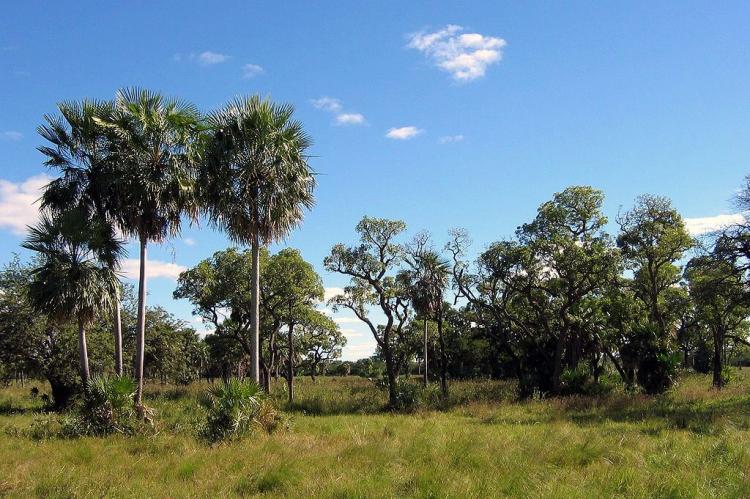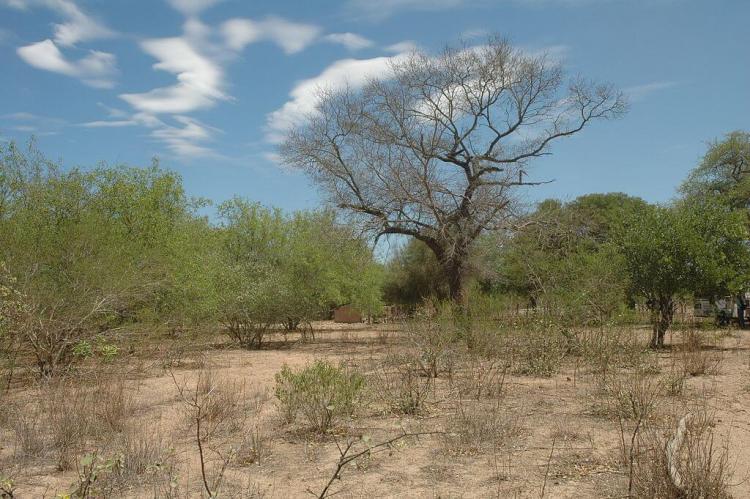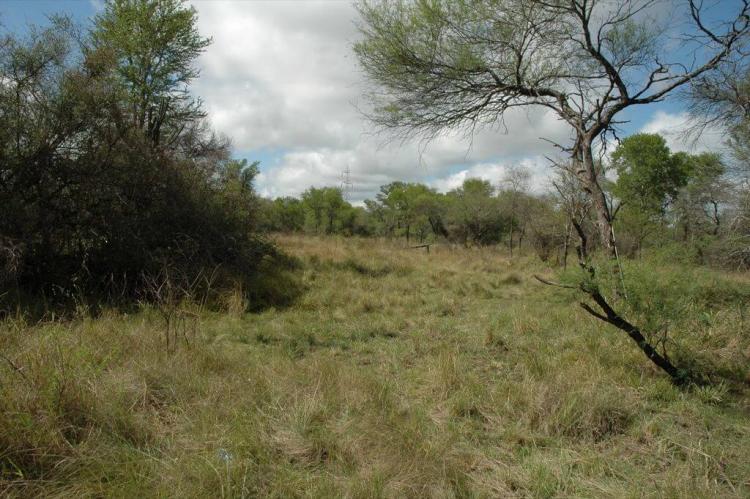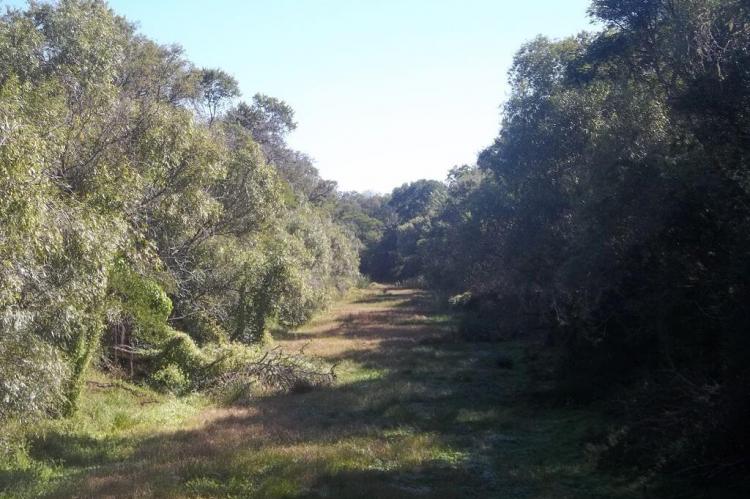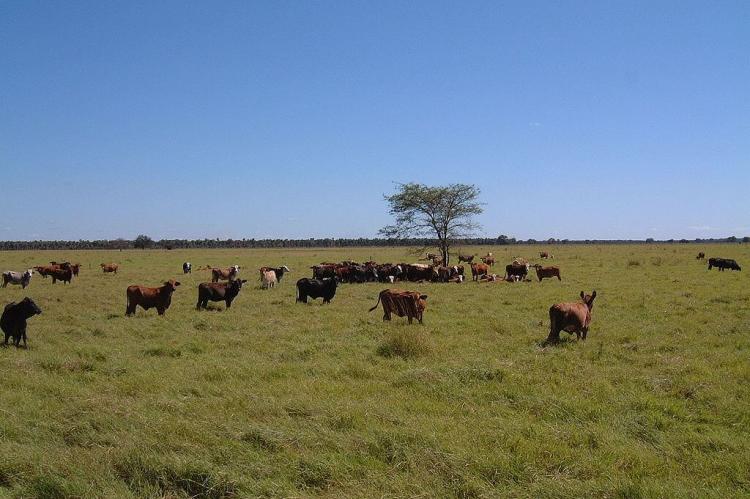The Gran Chaco: A Blend of Biodiversity and Challenges
The Gran Chaco, or simply Chaco, is a sparsely populated lowland alluvial plain of the Río de la Plata basin. Characterized by diverse ecosystems, the Chaco is often divided into two central ecoregions: the Humid Chaco and the Dry Chaco, which differ in climate, vegetation, and ecological characteristics.
The Gran Chaco
A Blend of Biodiversity and Challenges
The Gran Chaco, or simply Chaco, is a vast and intriguing expanse that stretches across eastern Bolivia, western Paraguay, northern Argentina, and parts of the Brazilian states of Mato Grosso and Mato Grosso do Sul, seamlessly connected with the Pantanal region. Located in the rain shadow of the Central Andes, it is primarily an alluvial sedimentary plain, home to South America's second-largest forest after the Amazon rainforest. However, it is also one of the most deforested areas in the world.
Covering over 1,000,000 square kilometers (386,000 square miles), though estimates vary, this sparsely populated region stretches from the eastern slopes of the Andes Mountains to the lowlands of the Río de la Plata basin. Its borders are defined by major rivers, including the Paraná and Paraguay, and it stands as a landlocked region in the heart of the South American continent.
Characterized by diverse ecosystems, the Chaco is often divided into two ecoregions: the Humid Chaco and the Dry Chaco. These ecoregions differ in terms of climate, vegetation, and ecological characteristics. The boundaries between the Gran Chaco's neighboring ecoregions are not always sharp. Transitions happen gradually, with mixed features in border areas.
Geographical Extent
Bounded to the west by the majestic Andes Mountains, the Paraguay River frames the Gran Chaco in the northeast and the Paraná River in the southeast. This lowland alluvial sedimentary plain is crisscrossed by two vital rivers, the Pilcomayo and the Bermejo (Teuco), originating in the Andean heights and flowing southeastward across the plain to join the Paraguay River. These rivers demarcate the three main subregions of the Chaco in Paraguay and Argentina - Chaco Boreal to the north of the Pilcomayo River, Chaco Austral to the south of the Bermejo River, and Chaco Central between the two rivers.
The Gran Chaco spans across four countries:
-
Argentina: This most significant portion is about 60% of the total area.
-
Paraguay: Contains around 25% of the Gran Chaco.
-
Bolivia: Houses roughly 10-15% of the region.
-
Brazil: Encompasses a small section in Mato Grosso do Sul.
Subregions
Within this expansive territory, three main subregions—Chaco Boreal, Chaco Austral, and Chaco Central—emerge, each distinguished by unique geographical features, ecosystems, and cultural nuances.
-
Chaco Boreal:
-
Location: Situated north of the Pilcomayo River, Chaco Boreal encompasses the northernmost part of the Chaco region.
-
Geography: This subregion features a predominantly flat topography, with lowland plains extending towards the northern territories of Argentina and western Paraguay.
-
Climate: Chaco Boreal experiences a subtropical to tropical climate with relatively higher temperatures. The region has distinct wet and dry seasons, influencing its flora and fauna.
-
Vegetation: The landscape is characterized by dry thorn forests, savannas, and occasional palm stands, adapted to the arid and semi-arid conditions.
-
-
Chaco Austral:
-
Location: Positioned south of the Bermejo River, Chaco Austral covers the southern expanse of the Chaco region.
-
Topography: The topography features lowland plains interspersed with occasional hills and elevations. The Bermejo River contributes to the region's hydrological dynamics.
-
Climate: Chaco Austral experiences a subtropical climate, with temperatures ranging from warm to temperate. Rainfall is relatively higher than northern Chaco, influencing the area's biodiversity.
-
Vegetation: This subregion hosts diverse vegetation, including semi-deciduous forests, palm savannas, and areas with seasonal flooding. The presence of the Bermejo River fosters unique riparian ecosystems.
-
-
Chaco Central:
-
Location: Positioned between the Pilcomayo River to the north and the Bermejo River to the south, Chaco Central forms the intermediary zone within the Chaco region.
-
Landform: Chaco Central exhibits a mix of lowland plains and intermediate elevations. It is a transition zone, reflecting Chaco Boreal and Chaco Austral features.
-
Climate: The climate in Chaco Central varies, transitioning from subtropical to temperate. This transitional climate contributes to a blend of flora and fauna adapted to diverse environmental conditions.
-
Natural Features: The subregion is characterized by grasslands, quebracho woodlands, and transitional ecosystems that bridge the characteristics of the northern and southern Chaco.
-
These subregions of the Chaco are distinguished by their ecological features and bear cultural significance. Indigenous communities, such as the Qom, Pilagá, and Wichi, have long inhabited these landscapes, adapting their lifestyles to the challenges and opportunities of the Chaco's diverse environments.
Climate
The Gran Chaco experiences diverse climates, transitioning from tropical in the north to warm-temperate in the south. While subtropical conditions predominate, average temperatures vary from 16 to 29 °C (60 to 85 °F). Relative humidity averages between 50% and 75%, and annual precipitation hovers around 865 mm (34 in). The climate, though challenging, has shaped a unique environment characterized by an array of landscapes ranging from dry thorn forests and cactus stands to palm savannas that flood during the wet season.
Biodiversity
The Chaco region boasts an astonishingly rich biodiversity, adapted to thrive under arid conditions. Its varied vegetation includes dry thorn forests, cacti-studded landscapes, and palm savannas. This diverse ecosystem is home to approximately 3,400 plant species, 500 bird species, 150 mammal species, and 220 reptile and amphibian species. The unique adaptations of flora and fauna make the Chaco a critical reservoir of biological diversity within South America.
Protection Status
Despite its ecological significance, the Gran Chaco faces significant challenges. The region, characterized by low population density and limited infrastructure, has traditionally been considered too remote for extensive agricultural activities. However, recent trends indicate a changing landscape, with advancements in agriculture penetrating the region. The resulting deforestation and increased habitat loss threaten Chaco's pristine ecosystems.
Twenty-five percent of the Gran Chaco in Argentina has been cleared for agriculture, mainly extensive crop and livestock production, and mostly in the last 20 years. In recent years, Argentina, Paraguay, and Bolivia have lost native vegetation at an alarming rate, sometimes exceeding an acre per minute. Projections for 2030 suggest that millions more acres of native vegetation may succumb to this encroachment.
Variations in climate have also contributed to rapid deforestation, soil degradation, and biodiversity loss. The delicate balance between development and conservation in the Gran Chaco underscores the urgent need for sustainable land-use practices and international cooperation to protect this vital ecoregion.
Cultural Significance and Indigenous Communities
Beyond its ecological diversity, the Gran Chaco holds immense cultural significance. Indigenous communities, including the Qom, Pilagá, and Wichi, have deep connections with the land, adapting their lifestyles to the challenges and opportunities of the Chaco's diverse environments. Their traditional knowledge and sustainable practices contribute to the region's cultural richness, emphasizing the need for a holistic approach to conservation that respects both biodiversity and indigenous heritage.
Conclusion
In unraveling the Gran Chaco's complex tapestry, we encounter a region of extraordinary ecological significance and a land woven with cultural threads that have withstood the test of time. The Gran Chaco invites us to explore its depths, understand its challenges, and work collectively to preserve this crucial ecoregion for future generations. Balancing development and conservation, protecting biodiversity, and respecting indigenous cultures are pivotal to ensuring a sustainable future for the Gran Chaco and its diverse inhabitants.
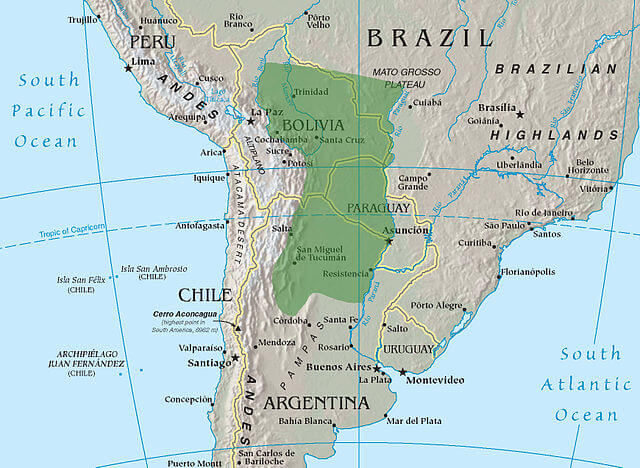
Map depicting the approximate location of the Gran Chaco region
Dry Chaco Ecoregion
The Dry Chaco, or Chaco Seco, is a distinctive ecoregion forming part of South America's broader Gran Chaco region. Spanning across eastern Bolivia, western Paraguay, northern Argentina, and portions of the Brazilian states of Mato Grosso and Mato Grosso do Sul, this semi-arid lowland plain is a testament to the resilience of life in arid landscapes. Here, unique ecosystems, climatic conditions, and biodiversity converge to create a captivating mosaic of natural wonders.
Geographical Extent
The Dry Chaco has a relatively flat topography, encompassing an expansive area of approximately 647,500 square kilometers (250,000 square miles). Bordered by the Andes Mountains to the west and traversed by major rivers such as the Pilcomayo and Bermejo, the ecoregion is positioned within the Río de la Plata basin.
Climate
As the name suggests, the Dry Chaco experiences a semi-arid to arid climate. Rainfall is limited, and the region is subject to pronounced dry seasons. Average temperatures can vary from tropical in the north to warm-temperate in the south, with subtropical conditions dominating most of the ecoregion. Average temperatures typically range from 60 to 85°F (16 to 29°C), creating an environment where the adaptation of flora and fauna to arid conditions is paramount.
Vegetation
The vegetation of the Dry Chaco is highly adapted to arid conditions, showcasing a remarkable variety of landscapes. Thorn forests, dominated by drought-resistant trees and shrubs, characterize large portions of the ecoregion. With their unique adaptations to conserve water, cactus stands are a common sight. During the wet season, palm savannas may emerge, flooding temporarily and creating dynamic ecosystems. These diverse landscapes contribute to the ecoregion's rich biodiversity.
Biodiversity
Despite the challenging environmental conditions, the Dry Chaco boasts a high level of biodiversity. Approximately 3,400 species of plants, 500 species of birds, 150 species of mammals, and 220 species of reptiles and amphibians call this arid landscape home. Iconic species, such as the Chacoan peccary and the Chaco owl, are unique inhabitants adapted to the ecoregion's specific ecological niches.
Conservation Challenges
The Dry Chaco, sparsely populated and historically considered remote, has faced increased human impact in recent years. Agriculture has penetrated the region, leading to deforestation and habitat loss. While the central Chaco's Mennonite colonies have been an exception in population density, the broader ecoregion is characterized by a lack of good all-weather roads and basic infrastructure, making it challenging to manage and protect effectively.
Protection Status
As one of South America's last agricultural frontiers, the Dry Chaco faces ongoing conservation challenges. The loss of virgin forests and habitat due to agricultural expansion is substantial. Conservation efforts are crucial to mitigate the impact of deforestation and protect the ecoregion's unique ecosystems. International collaboration among the countries that share the Dry Chaco—Argentina, Paraguay, and Bolivia—is essential to implement effective conservation strategies and balance the need for development with preserving this arid beauty.
Humid Chaco Ecoregion
The Humid Chaco, known as Chaco Húmedo, is a captivating subregion nestled within the expansive Gran Chaco, a vast territory spanning eastern Bolivia, western Paraguay, northern Argentina, and portions of the Brazilian states of Mato Grosso and Mato Grosso do Sul. Renowned for its favorable climate, lush landscapes, and rich biodiversity, the Humid Chaco starkly contrasts its drier counterpart, the Dry Chaco, offering a verdant oasis within South America's heartland.
Geographical Extent
Positioned east of the Dry Chaco, the Humid Chaco unfolds as a sprawling lowland plain with a more favorable climate characterized by higher rainfall. The subregion is intricately connected to the Río de la Plata basin and shares borders with the Paraná and Paraguay rivers. Its topography varies, featuring wetlands, marshes, and diverse vegetation.
Climate
In contrast to the arid conditions of the Dry Chaco, the Humid Chaco experiences a subtropical climate marked by higher levels of rainfall. This more generous precipitation sustains an environment conducive to the growth of extensive forests, wetlands, and other lush vegetation forms. The higher humidity levels contribute to the vibrant biodiversity that thrives in this ecoregion.
Flora and Fauna
The Humid Chaco boasts a remarkable diversity of plant and animal life, adapted to the more favorable and humid conditions. Lush forests cover significant portions of the landscape, including deciduous and semi-deciduous species. This ecoregion is home to various wildlife, including numerous bird species, mammals, reptiles, and amphibians. The convergence of ecosystems, ranging from riparian habitats along the rivers to wetlands and marshes, adds to the biodiversity of the Humid Chaco.
Aquatic Ecosystems
Major rivers, including the Paraná and Paraguay, create aquatic ecosystems within the Humid Chaco. These water bodies sustain diverse plant and animal species and play a crucial role in regional hydrology, influencing the surrounding landscapes and fostering unique habitats.
Conservation Challenges
While the Humid Chaco may be less impacted by deforestation than the Dry Chaco, it is not immune to environmental challenges. Urbanization, agriculture, and infrastructure development threaten this ecoregion's delicate balance. Conservation efforts are essential to address these challenges, ensuring the long-term health of the Humid Chaco's ecosystems and safeguarding its biodiversity.
Cultural Significance
In addition to its ecological importance, the Humid Chaco holds cultural significance for the communities residing in and around the ecoregion. Indigenous populations and local communities often have deep connections to the land, relying on its resources for their livelihoods. The unique blend of nature and culture adds to the richness of the Humid Chaco's tapestry.
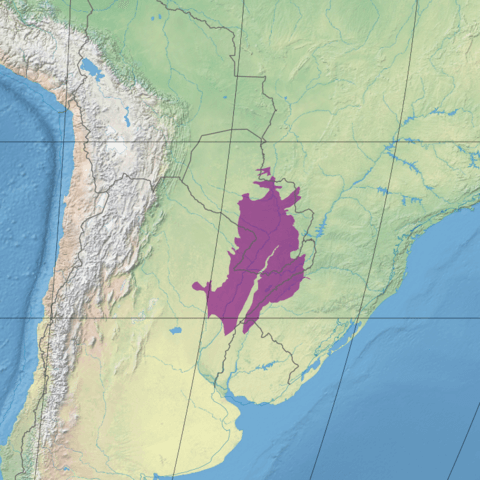
Map depicting the location of the Humid Chaco (in purple)
